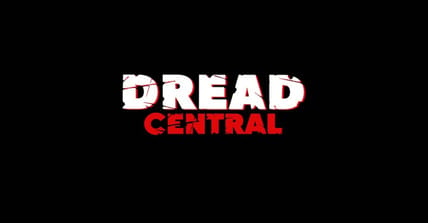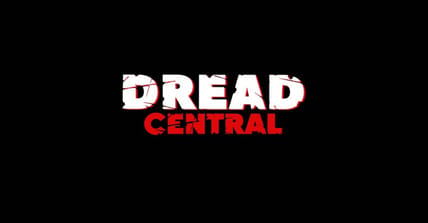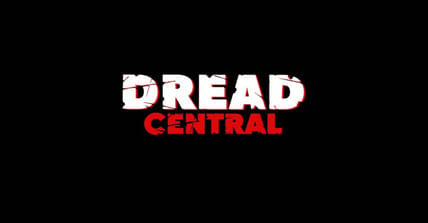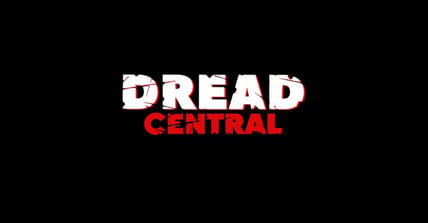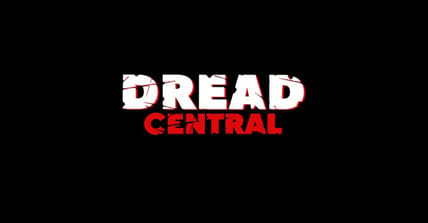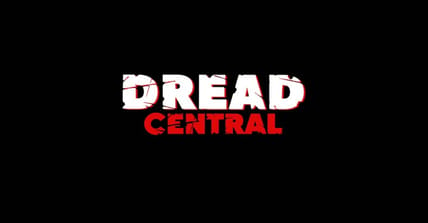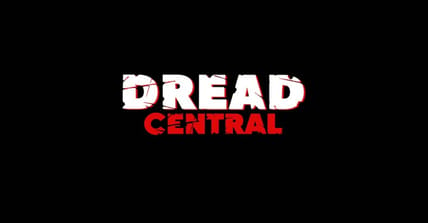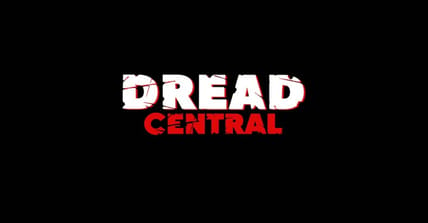Exclusive: Talkin’ Dream Warriors, Dream Master, and More With Production Designer Mick Strawn Part II

 I’ve had the opportunity to interview quite a few people at this point here on Dread Central and the interviews usually go about the same way. I come up with a list of 8-10 questions, and my guest of honor and I go through them easy-peasy.
I’ve had the opportunity to interview quite a few people at this point here on Dread Central and the interviews usually go about the same way. I come up with a list of 8-10 questions, and my guest of honor and I go through them easy-peasy.
But this one was different.
Yes, when I got the call to interview legendary production designer Mick Strawn (The Hidden, A Nightmare on Elm Street 3: Dream Warriors, A Nightmare on Elm Street 4: The Dream Master, Mortal Kombat, and much more!) I leap at the chance. Little did I know this particular sit down would take up the better part of my month.
Yes, once Mick and I got to talking the ball seemingly never stopped rolling and below you will find the second part of our epic 2-part interview with Mick Strawn. Give it a look-see below and then make sure to go back and check out part 1!
***
 Dread Central: Two of the things that you brought up that you were clearly very passionate about were Mortal Kombat and Mantis, so do you have a preference on which one you’d like to cover first?
Dread Central: Two of the things that you brought up that you were clearly very passionate about were Mortal Kombat and Mantis, so do you have a preference on which one you’d like to cover first?
Mick Strawn: Let’s do the Mortal Kombat, and then we’ll launch into Mantis.
DC: Nice. Okay.
MS: Mortal Kombat, in a way, is kind of like a singular story. I was just kind of in between films, I don’t remember what I was doing at the time, but I got a call from Bob Shaye, and he said “I have a film that I’m working on, and I need you,” without talking to me about it or anything, “I need you to go to such and such, for a screening.”
He said, “I’ll meet you over there in a couple hours.” And so he shows me a film and he says, “What’s wrong with this film? Just give me a review.” And said, “Okay. Well, you let the concept of Mortal Kombat fool you.” “What do you mean?” Well, the concept of Mortal Kombat is that there is a match between these super characters, right? But it turns out that they are actual karate actions, right? And so you line them up as karate actions and you get all these incredible depictions. And you say, this is the mat and this is the place that we’re going to have the match, and then you have a match.
And I said, that might be mildly interesting, but let’s stop and think for a minute. What do you remember about Robin Hood? And he goes, “You mean the black and white Robin Hood?” I go “Yeah, from way back.” He says, “There was a sword fight, and Basil Rathbone and Errol Flynn, Errol Flynn is fighting backward up a staircase, and he brings the chandelier and he swings down. That’s what I remember about it.” I go, “Exactly. That’s what everybody remembers about it.
What do you remember about The Princess Bride?
DC: The sword fight.
MS: Yeah, exactly, right? And what do those things have in common? They have in common that the set is an intricate part of the fight. Now, here’s what you have. You have a movie that you have made that has all these fights, and because you got fooled by the fact that they’re matches, you did not use the set in any of these fights, in any way whatsoever. You just have these great locations where you have them fight in the middle of it.
And he goes, “Oh, shit. How did we possibly miss that?” And so we sat down and we did re-shoots… We did a series of re-shoots that added pieces in. As much as we could an in pieces, we did inserts. And then we did two sequences. I can’t remember who it was. One of them was this spinning device that had a blade on it in the middle of the arena. That was one added. And one with Scorpion.
DC: Out in the woods?
MS: Not the one in the woods. It’s when all of the sudden it comes into that big, black space, with the ladders and the bamboo and the cobwebs. I said, here’s what you’re going to do. I will make a series of platforms. I will discuss it with the stunt coordinator. We’ll do a series of platforms all over the place, and we’ll just make them out of steel, and then I’m going to put a look over the top of it.
And when we went to the aircraft hangar, it was 100 feet high, 100 feet deep, 100 feet wide, and we built the steel out there, and then we did that bamboo treatment to it, and we filmed the Scorpion sequence. Which is, to this day, it is… Most everybody remembers that as “the” sequence from Mortal Kombat.
DC: Very cool. Can I ask you a question about Mortal Kombat right quick? Maybe you know.
MS: Sure.
DC: So you were pretty close with Bob Shaye. What was his reason for taking such a violent video game and going PG-13?
MS: He was world-building. It’s like Nightmare on Elm Street 4, he does almost the same thing. I understand that it’s an unrated film, but at the same time, it’s still… The people that were going to see it was all 13-year-olds, let’s face it, right?
And I think he was doing exactly the same thing with Mortal Kombat. It’s really hard to get your parents to take you to see a serial killer of children. If your fanbase is 13, and they’re certainly going to find a way to do it, I understand that, but at the same time, if you’re going to build your brand, and that’s exactly what Bob was doing right then, and build your brand, that’s a great way to do it. It’s to tease things that are just a little bit infamous, and blow them out and leave them a little bit infamous.
DC: Yeah. The fact that Bob Shaye was able to turn a burnt-up child molester into an action figure, a teddy bear is brilliant. People don’t give him enough credit for that.
MS: Yeah, I totally agree. I totally agree with you. Because hell, I was part of it, you know? I saw Nightmare on Elm Street 3 and Nightmare on Elm Street 4 as action films. I still to this day see them as action films. Mortal Kombat? Same exact thing.
 DC: Right, yeah. Exactly. So let’s move on to Mantis.
DC: Right, yeah. Exactly. So let’s move on to Mantis.
MS: Mantis. I love Mantis. It’s so funny because the film was supposed to be a TV series. And when it went up to become a TV series off of the two-hour movie, they took the lair away [PICS BELOW] and did it with a couple ancient computer boards. [laughter] Oh, and then they gave him a whole bunch of white sidekicks and stuff. They made it so that the only black person that was in it was Carl Lumbly. Which I think was just really tragic. I mean, they just changed everything. But we had a blast doing that!
It’s pretty awesome, but there aren’t that many good versions of it out there. Most of them are like, people have taken pictures of it when it was on screen, that kind of thing. VCR copies and stuff.
But yeah, I mean, here was a black super-character that wore a tie and had the smart outfit, and he was a scientist. And yeah, it was awesome. We had a great time building that. They just kind of let us go crazy on the sets. They had these loud colors in it. And they gave us this camera, it was just this amazing new technology, where you were shooting with a 35mm camera, and it had this thing called a “digital takeoff”. So it was recorded digitally onto CDR drives.
DC: For playback.
MS: Right. But not only for playback, for editing. Because it was one of the first non-linear editing systems. In other words, what they did is they could take that and they could feed it through what they used to call an Avid, and an Avid was one of the first tape editing systems that was non-linear. And the Avid, it would just store all of that, and then you could do it non-linear and what they would do then, and that concept was, then they would go back to the original film and they would just re-cut a negative off of it.
DC: Very smart.
MS: Yeah. It was the very first. It kind of reminds me of a hybrid car. [laughter] Sort of like, working both angles off of it. Because it had film and it had digital technology. The only problem was that originally you start with dailies, right? And you just keep doing dailies just because. But they’re already editing way ahead of you because they’d get the editing. Every time they got a CD, they could start to edit it, right?
So it kept going like that until they would do dailies every couple of days. And then they’d do dailies every three days. And then when they finished the film, they didn’t do any of the dailies. They didn’t even develop the film for the last week. And we’re in there, we’re taking the sets down, when we get this call, and this PA says, okay guys, you’ve got to freeze.
So we get down there, and we see that on the Tuesday of the last week, the device that adjusts the 35mm shutters slipped all the way open, and so it ruined all of the film from the last three and a half days of shooting, and they had already edited it. [laughter]
DC: Oh, wow!
MS: With the tape off. So, in order not to lose money, they had to put the sets back together and re-enact the film exactly to the playback!
DC: Wow.
MS: Dude, I’ve got to tell you. It was an eye-opening experience for people in Hollywood who were so used to never doing anything twice, right? Because you think to yourself, well, if we don’t do anything twice, it would certainly be easy for us to do it twice, but we never have to. Well let me tell you when you have, it’s a terrible life. It was just the most obnoxious thing I think I’ve ever done. Just everybody just hated each other. I mean, just the anger. [laughter]
DC: And so that’s three days, long days, all for nothing.
MS: Yeah, all for nothing. But the thing is, though, is that you’d be getting paid and all of that.
DC: That’s true.
MS: It’s more personal than that, though. I mean, that’s the problem. The problem is that for one thing, you’ve done this before. And you don’t get to improve upon it, and you don’t get to do anything. You have to just do it exactly like it was. And I swear to God, there were fights all over the stage. It was weird because you never saw people actually have enough time to fight. But boy, people were surly, knock-down drag-out. Oh, my God.
DC: That was only ever meant to be a pilot episode?
MS: It was. It was a pilot. They made an hour and a half long movie out of it. If you look at the pictures that I sent you, it was a pretty extensive set, but they never used that much of it in the film itself because it was supposed to be there for the long run. And all of this great… I mean, I personally, I loved the look of the boards and stuff. And yeah, it looked really cool, but they turned around and did it in Canada.
 DC: Now would you like to talk a bit about Freddy’s Nightmares?
DC: Now would you like to talk a bit about Freddy’s Nightmares?
MS: You know, the weird thing about Freddy’s Nightmares is that I never liked the DP. I never thought that they got a good look out of it because he was from daytime TV. He used the lightbox thing. And I thought that we did a lot of really decent work for it, but the stories came in too fast, were too incomplete. We did have a bunch of amazing directors come through. I mean, really.
DC: Yeah, it’s notorious, for so much talent.
MS: Yeah. Tobe Hooper was the first one through it.
DC: William Malone, Mick Garris, Tom MacLachlan, Ken Weiderhorn…
MS: Yeah, Ken Weiderhorn came through! You know, it was an amazing, amazing mill. It was really strange though because you were working so hard, your brain just floated through the days. I think we did about 300 sets in eight months. 23 one-hour episodes in one year. In one eight-month season.
DC: Wow.
MS: Altogether, I think that the idea was that we were going to do seven years, too. By splitting up the one-hours into two half-hours. And the way that they would split them is that they would do an ambiguous story. And that made it so that they used sets to solve everything. And sets and effects… God, you can’t imagine. I always thought that our dental tool was a particular favorite of mine. [laughter]
DC: Which one was that one in?
MS: Tobe Hooper’s. I think that glove went for a huge amount of money. And the funny thing is that glove was sitting on my desk forever. I was going to take it home, because I had to sign a thing and help the guys build it, and some guy came along and was going… He was trying to get pieces for a kid’s auction, for like City of Hope or something like that. And we were always so busy, it was like, okay, well, what do you want? And he’s like, “Well, we just want an iconic prop.” And somebody said, “You mean like the glove on Mick’s desk?” [laughter] And I said, okay, whatever. And I gave it to them and away it went. I don’t really need to collect crap.
DC: So you didn’t collect props?
MS: Not a thing. You know, I was talking to a friend of mine who’s in effects. He always worked with me on those, too, and he said: “We could have gotten a storage unit and stored stuff, and made it a storage worth a couple hundred thousand dollars.”
And I said, yeah, that’s right. And he said, “Except for how we would we have picked what to do?” Because that’s the problem, you know? First of all, you don’t have the perspective. You’ve got the perspective of this: this is my job, and in three weeks it’s going to be out. When you’re three-quarters of the way through it, all you can think of is in three weeks, I need another job.
But you know what? You’re a writer, so I’ll put it in terms that you really would understand. Do you like to go back and read things that you wrote a year and a half ago?
DC: Nope.
MS: Dude, not only that, it’s not a neutral nope, it’s a strong nope, isn’t it? It’s like, no, I don’t want to hear from it. And why is that?
DC: Because of how much you’ve progressed since.
MS: Right, exactly. Same thing. [laughter] I don’t know why, but with the people who do that… Think of it this way. Look at the moldering piles that all the make-up and effects stuff winds up in, right? What’s the first thing when somebody gets… I mean, other than a couple of iconic things like Freddy’s gloves and stuff, and I just really didn’t care.
I mean, there was a business going on on every film that I was trying to get as many gloves into Freddy’s hands that were made by different people on the crew, right, to say that there was a screen-worn glove. The thing is, people out there, if you sit down and counted, there are probably 5,000 screen-used gloves out there, and there’s not. I mean, it’s impossible to track. And really, the guys who really were working out there, they just didn’t care that much about it. Because they think the same way you did about your writing a year and a half ago.
The thing is, is I was there. [chuckled] Because I get that question all the time, I swear. I get it at least three times a week. Somebody said something about Critters 2 the other day. They said, “Do you have any of the critters from Critters 2?” And I was like, “First of all, no. Second of all, what difference does it make to you? Am I going to give it to you? Am I going to sell it to you? Probably not.” [chuckles]
 DC: What can you tell us about Tales from the Darkside?
DC: What can you tell us about Tales from the Darkside?
MS: It was done on two coasts. Half of them were done in New York with Tom Savini’s company, and half of them were done in LA. I worked as an art director on the LA side, and I got to meet a lot of really cool people.
I remember building my first spacecraft out of nothing but light bulbs in the parking lot. [laughter] I’m not kidding. What we did is we’d wait until dark, we’d just painted some stage jacks black, but up a bunch of one-plys that were black, screwed them on, put up a bunch of light bulbs, and then we built a platform that just kind of dropped down, about two feet, so you could see just the platform coming down, put fog all over the place so you just saw a platform lowering. That’s all you saw. Just saw the platform come down. And then you cut to a reaction of the guy who’s seeing it, ahh! and then there are two aliens standing on the platform. And you would not believe how it all worked. [laughter] I was just blown away!
 DC: Let’s talk a bit about Leatherface: The Texas Chainsaw Massacre III.
DC: Let’s talk a bit about Leatherface: The Texas Chainsaw Massacre III.
MS: You know what, what’s scary is the thing you don’t see out of the corner of your eye, right? I mean, that’s what I did at Texas Chainsaw, that was exactly my mantra through the whole thing was I wasn’t going to be absolutely obvious at any time. I was just going to be just slightly weird. To go into a farmhouse like that, and come around the corner and there’s just this kind of dirty, industrial kitchen there. [laughter]
DC: Personally, I have a lot of respect for Chainsaw Massacre 3. But I think it’s a movie that definitely suffers from being butchered after the fact.
MS: Oh yeah. The thing is [director Jeff Burr] made it so violent that cutting the violence out didn’t work because you didn’t do as much pure foreplay as you would of if you knew that you were going to cut to the blood just spewing off the corpse. You see what I’m saying?
DC: Yeah, and it left plotholes. Like whatever happened to the guy who gets his ear shot off?
MS: Right, exactly. Like, where did he go? And the next thing you know, you’re cutting to the fight around the truck and he’s just gone, right?
DC: Right.
MS: You know, we built that house from scratch. We did build the gas station from scratch, and I’ll tell you a story about the gas station. When I was a kid, my dad used to be one of those home mechanic guys. So we were always going down to this auto parts store that was a typical 60s auto part store. It’s dark and dingy, and in it, I remember the very first time I went to the bathroom there. You go through a door, and in this place, it’s dirty and greasy anyway. But you go through the door and it is just disgusting. I mean, disgusting in every way that you can imagine. Where you’d look down in the toilet water and you can see it see it is so gunked up that there’s only one stripe where the water would run out, right? [chuckles] And they had taken nude pictures of women and cut them up and glued them to each other in every square inch of this bathroom.
DC: Isn’t that in Leatherface?
MS: Exactly! [laughter] That’s exactly where that came from! It came from me going to the bathroom in this place, including the place where people at the toilet, the stall didn’t have a door, and there was a toilet, and there was a place on the wall where everybody put their hand when they were busy. And it was grease all of the car parts and stuff, and grease everywhere and stuff. And I just thought, yeah, that has to be that bathroom.
DC: The devil’s in the details.
MS: The devil’s in the details, man. That bathroom was awesome. That bathroom was the first thing that really told you-you were in deep shit.
And then we had this truck. This was before you had everybody in the world with a Ford F-150, that you needed a ladder to climb up in, right? We built that truck, and every time I went up to talk to them about it, the truck, I would say, “This has to be higher. It has to be absurdly high up in the air. It can’t be calm or anything like that.” It’s got to be the ultimate backyard mechanic stuff.
And the thing is that they built it up and built it up and built it up until they could hardly control the thing, and there is one time where you’re watching it in the movie, and you’re watching as the thing swerves towards the camera, and I distinctly remember that that was not intentional. I mean, that they had hit a little tiny bump on the side of the dirt road, and it had made the thing swerve towards the camera, and it just looked so cool they left it in.
DC: Can you talk about the multiple endings?
MS: We re-shot the ending. And by the way, I loved the original ending. If you ever get a chance… You know, it’s all over the web. Get a look at the first ending. Because the first ending, with the police car and the little girl in the back of the police car, and it explains where the little girl went. It’s amazing. It leaves you with no hope in the world. [chuckles]
That was the original ending. So we re-shot the other ending, which was really funny, because we did it literally moments before they released the film, and they decided that they wanted to give hope to the characters.
That was shot at the very end of the last day of the re-shoot, and we were shooting up at Magic Mountain. We were on a dirt road and all of the sudden the sun goes behind one of the mountains back there. And we had to run about 150 feet with camera gear and everything, and the truck, just to run in front of the truck. So we leave the truck there and we run 150 feet. Now we get the camera, we start the camera, and then we bring the truck up. And we kept doing that, re-shooting it, hopping all the way across the valley.
DC: Were you a part of the classic teaser trailer?
MS: No, that was on a lake, though. We built a swamp. [laughter] That’s the problem is we’re up behind Magic Mountain, and there ain’t nothing… It’s not all that easy to find any water. And at the same time, we didn’t want to move everything somewhere else for that series of shots, because we were really locked into that scrubby look, right? So we basically built a swimming pool. You want full reserves in there. You don’t want mud. You want to do it so that it’s as sterile as possible so that you can chlorinate it so that you can pee in it if you have to, the whole nine yards. It’s a lot harder than it looks. So basically, what we did is we built a pool and filled it up and kind of went from there with it. I thought the floating skulls and stuff were a little bit much.
DC: But that’s the thing about Chainsaw Massacre 3, it takes stuff a little bit further than normal. I’m looking at a picture of the scene where they exhume the bodies and the look is a little bit more disgusting than usual, that black slime.
MS: Oh yeah, that was really interesting. We went out and dug a hole for that. That was make-up effects. I had a bunch of stuff left over and they gooped it up, and oh man, that was disgusting, wasn’t it? But what I thought was cool about it was that it made no sense that they were gooey, but we made them gooey anyway. [laughter] Let me put it this way. I was at the con and we were on a panel and a guy starts talking about the windows blowing out on Nightmare on Elm Street 4, of the classroom. And we were sitting there, and he’s asking me, “So why at the end of Joey yelling did all of the sudden all of this glass blow out?” And he said, “I don’t know if that’s in a dream or not in a dream.” And so I thought about it for a second. I thought, “Well, did you think it was really cool?” And he goes “Oh yeah, it was cool as heck.” Well then, what the hell are you worried about? [laughter] The thing is in the end, it’s our job to entertain people.
 DC: I wanted to make sure we touched on Fatboy’s “Are You Ready for Freddy.”
DC: I wanted to make sure we touched on Fatboy’s “Are You Ready for Freddy.”
MS: The thing that was great about that video was dealing with those Fatboys, and the promotional company had come over and they had dropped off a bunch of these little scooters, right? I think that you see them on the scooters at the very end of the video, scooting around. So they dropped off six or seven of them, and I was hanging with them outside. And we’re just playing outside on the scooters. We’re talking, driving around the parking lot and playing chicken with them and stuff. And then the boys got into a philosophical argument, and the philosophical argument was if you had Michael Myers and Leatherface and Freddy, then who was the baddest? And they kept going back and forth, and they had real reasons all lined up for it. So I was listening, and I’m just sitting there, and I was just cracking up. Because I was like, the expert on it for them. And they keep going back and forth, and we’re cracking up. Finally, the shortest, I can’t remember his name, it’s been so long, but he had the gold teeth. He had been quiet for a while, and it was like, “It was not even a contest. This isn’t even a contest. This is all bullshit. Freddy would just get him all! You know why? Because Freddy comes to you in your dreams. He’s coming to get you in your dreams, and that’s all there is to say to that.” And how could you argue with that kind of logic?
DC: Pretty much. Ronny Yu tried for two hours to argue with that logic and I don’t know how successful that was.
MS: [laughter] Well, it was the end of that argument, I’ve got to say.
DC: That’s actually a fun question to end on. Who do you think won Freddy vs. Jason?
MS: Well, you know, what I have to say to that is Freddy. “He be in your dreams.” [laughter] “And that’s the end of that.”
***
Thanks again, Mick for joining us to chat about your kill career here at Dread Central!
And for everyone else out there, make sure to check out Mick’s podcast Dream Warrior Review, where he reviews films and tells stories about his 30+ years of filmmaking. And also check out What Is Scary where Mick deconstructs clips of sequences he’s worked on with stories and visuals. And finally, keep another eye out for his A Nightmare on Elm Street 4: The Dream Master book called Behind the Screams, coming out soon. The book is from the point of view of the crew and others who have truly great behind the scenes stories.
Remeber to check out the gallery of Mantis behind-the-scenes pics below. And after that, Make sure to hit us up and let us know what you think in the comments below or on Facebook, Twitter, and/or Instagram!
Categorized:Editorials News



